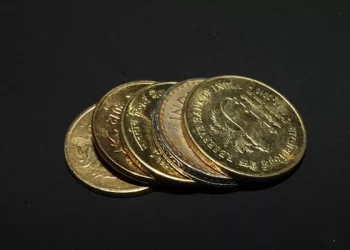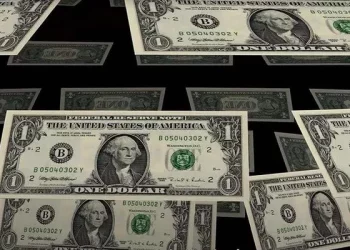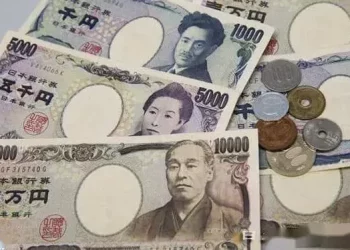At present, there are three methods of analysis: technical analysis, fundamental analysis and sentiment analysis.
The three approaches are actually related.
Fundamentals lead to market sentiment, and technical aspects are visual expressions of market sentiment.
But there is a lag in the reaction from fundamentals to technicals.
Therefore, if we only focus on technical indicators and ignore major events that affect fundamentals, it is normal to lose money.
Therefore, in daily investment analysis, for example, short-term traders can focus on technical analysis and should also apply other analytical methods and pay attention to relevant information!
Medium – and long-term traders pay more attention to fundamental analysis.
Let’s take a closer look at the fundamentals.
What are the fundamentals?
In China, the fundamentals we talk about are actually the economic fundamentals of a certain country. The so-called fundamental analysis is the trend predicted by analyzing the economic influencing factors of a country.
Factors affecting a country’s economic development mainly includes the country’s political and social conditions, economic and financial data, an emergency situation, the government or central bank policy, etc., for example, the United States non-agricultural data release, this will make investors optimistic about and relative rate of rise accordingly, and on the $K chart shows that short-term upward trend.
What fundamentals should we focus on?
There are many factors that affect fundamentals. What should investors focus on?
01. The currency interest rate plays a decisive role in determining the monetary value of the currency, since the currency interest rate of a country determines whether capital enters or leaves the country.
The higher the interest rate, the greater the value of the country’s currency, and the higher it goes.
Investors are more concerned about the future trend of interest rates, so they can predict the price trend of currencies in advance.
What are the factors that affect a country’s interest rate?
Interest rates are set by a country’s central bank.
It is an important tool for adjustment.
It is also used to control investment, inflation and unemployment, which in turn affect economic growth.
It will be affected by economic factors such as the business cycle, inflation and taxes.
The economic cycle is divided into four cycles: boom, crisis, bust and recovery.
Generally, interest rates rise in the early stages of booms and crises;
During recessions and recoveries, interest rates fall.
We can tell which cycle we are in based on a range of economic indicators.
If inflation in a country is higher than expected, interest rates will be raised to prevent the economy from overheating;
When unemployment exceeds expectations, the central bank will cut interest rates to stimulate the economy and reduce unemployment.
In addition, the general interest rate changes are small.
At the same time, it will also be affected by different national policies and international financial market spreads.
Different countries have different interest rate policies.
We pay attention to the central bank interest rate resolution report!
We should also look at interest rate differentials between countries.
Markets can be volatile when one country raises rates and another cuts. That is, when spreads widen, they tend to favour higher-yielding currencies.
When spreads narrow, they are usually good for low-yielding currencies.
Finally, when we do market analysis, we focus on real interest rates.
Most of the time, we’re talking about nominal interest rates (bond rates).
The real interest rate is the difference between the bond’s interest rate and.
02. Monetary Policy Monetary policy affects the exchange rate by affecting the monetary interest rate.
Generally speaking, it is the intervention measures taken by a country’s government or central bank to regulate economic development, including adjusting interest rates and controls, changing the discount rate of commercial banks, adjusting the deposit reserve ratio and buying and selling national debt, especially when the inflation rate or unemployment rate of a country exceeds expectations.
The monetary policy of the central bank can be divided into tight monetary policy and tight monetary policy.
Raising interest rates or reducing the money supply, known as tight monetary policy, reduces investment;
Conversely, cutting interest rates or increasing the money supply is known as easy money policy.
Central to the policy adopted by the central bank is to study the relationship between the actual market inflation rate and the expected target inflation rate.
In general, central banks target 2% inflation.
In addition, we should pay attention to speeches by central bank governors and other important officials, which may touch on the future direction of the country’s monetary policy.
You can pay attention in advance to the schedule of some important speeches on the financial calendar.
03. Economic development prospects and Government finances The macroeconomic trends and prospects of a country have a direct impact on that country’s exchange rate.
If the economy grows more optimistic, the value of the country’s currency will rise.
Generally speaking, a country’s economic development is measured by four aspects: economic growth (), employment (unemployment rate, non-farm payrolls, etc.), inflation and the balance of payments.
If the government’s financial situation deteriorates, it is often manifested as the decline of the government’s solvency, which directly affects the trend of the national currency exchange rate.
International trade flows The proportion of a country’s exports and imports is divided into (exports > imports) and (exports < imports).
A trade surplus, also known as a trade surplus, indicates that strong demand for a country’s currency will increase the value of the country’s currency.
In contrast, a trade deficit, also known as a trade deficit, indicates a low demand for the country’s currency and a lower value of the currency.
05. National political situation and emergency situations This relates primarily to the political stability of a country.
The e more stable the political situation, the better the social situation, the more stable the national currency;
Conversely, if a country is involved in wars and geopolitical conflicts, it will reduce its demand for money.
When a major emergency occurs in a country, it usually causes risk aversion among investors and negatively affects the country’s exchange rate.
06. Watch some economic data Watch some economic data indicators for a number of countries, such as non-farm payrolls, unemployment rate, (GDP), consumer price index (PPI), retail sales data, housing starts, consumer confidence index, etc., usually disclosed weekly, monthly, or quarterly.
With the dollar in focus, we’ll be looking at some U.S. economic indicators.
Where do you get this data?
The financial calendar of professional websites and authoritative financial media, such as Reuters, Wall Street Journal, Bloomberg, etc.
In fact, there are many things to be aware of.
The fundamentals are not simple.
When we encounter some fundamental uncertainty in the transaction, how should we handle it?
The release of some news or reports may cause great instability in the foreign exchange market.
First, we should analyze this information or data report.
New forex staff are advised not to make any trades before and after the release of the report, and those with experience can adopt targeted strategies.
As fears of the new strain continued to ease, commodities and currencies surged on U.S. and European stock markets, while oil prices soared as much as 5 percent.
Please pay attention to the specific operation, the market is changing rapidly, investment needs to be cautious, the operation strategy is for reference only.

























